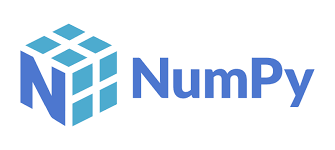Empower your machine learning projects with our definitive list of the top 10 Python libraries in 2023. Explore their unique features, practical applications, and best use cases to accelerate your development.
More...
Everyone knows what Python is at this point. On the other hand, not everyone might know about what libraries are! We have touched on frameworks and IDEs in the past, but today we are here to talk about the Python libraries.
So let’s start with the definition before we explore the top 10 Python libraries used today and provide real-life examples of their use.
What are Python libraries?
Python libraries are collections of pre-written code that can be used to expedite the development process. These libraries offer a variety of functions and tools that can be used to build complex applications. In machine learning, Python libraries are essential in enabling developers to build complex models with minimal effort.
The undisputed top 10 Python libraries
Scikit-learn

Scikit-learn is an open-source library offering numerous tools for machine learning tasks, such as classification, regression, and clustering. It encompasses an extensive range of machine learning algorithms and data preprocessing techniques.
Real-life example: Scikit-learn is used by Zillow to predict real estate prices based on factors such as location, square footage, and number of bedrooms.
Best use: Employ Scikit-learn for machine learning tasks such as regression, classification, and clustering.
Pandas
Pandas is a Python library dedicated to data manipulation and analysis. It supplies tools for data cleaning, data merging, and data visualization.
Real-life example: Pandas, when used with the New York Times API, allows for collecting and analyzing article data like headlines, publication dates, and snippets. This helps identify trends and patterns in news coverage, providing insights into topics, media focus, and other aspects of journalism.
Best use: Employ Pandas for data manipulation, data cleaning, and data analysis.
NumPy

NumPy is a library designed for scientific computing, providing support for large, multi-dimensional arrays and matrices.
Real-life example: The broader Earth science community, including researchers from organizations like NASA and ESA, often use NumPy as part of their analysis workflows. For instance, the European Space Agency's (ESA) Earth Observation Toolbox, "Sentinel Application Platform (SNAP)", supports Python scripting and is known to leverage NumPy for processing and analyzing satellite imagery.
Best use: Employ NumPy for scientific computing and data analysis.
Keras

Keras is a Python library specializing in building and training neural networks. It supports convolutional neural networks, recurrent neural networks, and other deep learning models.
Real-life example: Keras is used by Uber to develop self-driving cars.
Best use: Employ Keras for building and training neural networks.
TensorFlow

TensorFlow is an open-source library for constructing and training machine learning models. It supports a wide variety of machine learning models and data preprocessing techniques.
Real-life example: TensorFlow is used by Airbnb to predict the likelihood of a user booking a particular listing.
Best use: Employ TensorFlow for building and training machine learning models.
Eli5

Eli5 is a Python library that aids in debugging machine learning models and explaining their predictions. It combines visualization and debugging tools to help users better understand their models' inner workings. The library is compatible with various popular machine learning frameworks, such as scikit-learn, XGBoost, and Keras.
Real-life example: Eli5 is extensively used in industries where legacy software and innovative approaches are being implemented.
Best use: Employ Eli5 to debug and explain the predictions of various machine learning classifiers such as sklearn regressors and classifiers, XGBoost, CatBoost, Keras, etc.
SciPy

SciPy is a free, open-source Python library designed for scientific computing, data processing, and high-performance computing. Built on top of NumPy, it contains a vast collection of user-friendly routines for rapid computation.
Real-life example: SciPy is widely used in scientific research and engineering projects that require advanced mathematical computations, signal processing, and optimization.
Best use: Use SciPy for tasks such as linear algebra, numerical integration, solving ordinary differential equations, and signal processing, among others.
PyTorch

PyTorch, a popular Python library developed by Facebook, combines tensor computation with significant GPU acceleration and platforms based on deep neural networks. It is known for its user-friendly API and dynamic graph computation capabilities.
Real-life example: PyTorch is mainly used for natural language processing tasks, image recognition, and other deep learning applications. For instance, the Hugging Face library built on top of PyTorch was used for training and deploying state-of-the-art language models like BERT and GPT-2.
Best use: Employ PyTorch to train deep neural networks, especially in the field of natural language processing.
LightGBM

LightGBM is a machine learning library that offers highly scalable, efficient, and fast gradient boosting implementations. It is particularly useful for working with large datasets and achieving high prediction accuracy.
Real-life example: LightGBM is used in online advertising systems, fraud detection, and risk analysis. For example, Microsoft uses LightGBM for click prediction in Bing Ads, which processes billions of ad impressions every day.
Best use: Use LightGBM for gradient boosting tasks that involve large datasets and require high accuracy in predictions.
Theano

Theano is a Python library for defining, optimizing, and evaluating mathematical expressions. It is designed to handle the processing required by deep learning's large neural network algorithms.
Real-life example: Theano is used by researchers and data scientists to develop and train complex neural networks for various applications, such as natural language processing and image recognition. For example, Theano was used in the development of the Deep Learning Toolkit for Splunk, which enables the processing of large datasets for anomaly detection and predictive analytics.
Best use: Employ Theano for deep learning applications that require the development of complex neural networks.
Conclusion
Python has become an essential language for machine learning due to its ease of use, rich set of libraries, and flexibility. In this guide, we explored the top 10 Python libraries for machine learning, including Scikit-learn, Pandas, NumPy, Keras, TensorFlow, Eli5, SciPy, PyTorch, LightGBM, and Theano.
These libraries offer a wide range of tools and algorithms that can be used to build complex machine learning models with minimal effort. By understanding the best use cases and real-life examples of each library, developers can choose the right tool for the job and accelerate the development process.
